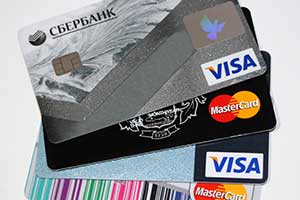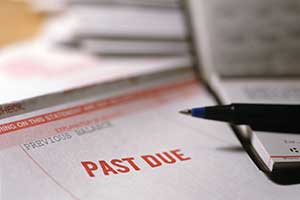
Getting credit is easy in the United States, so it’s tempting to use credit cards and loans to make purchases you otherwise couldn’t afford. When you use debt wisely, it can be a positive way to build wealth. But too many people are sucked into taking on the wrong kind of debt, the dangerous kind that starts to lead to financial problems and having their credit ruined.
The skilled and seasoned Ohio bankruptcy attorneys at Fesenmyer Cousino Weinzimmer understand that even the most well-intentioned people can take on debts that become overwhelming and, as a result, find themselves in a financial hole. We offer a free consultation to evaluate your situation. We can help by looking at your debts, your income, and your goals and determining what debt-relief solutions would work best for you.
Here is a look at what kind of debt is likely to be most dangerous and what to do about it.
Good Debt
Good debt involves investing in something that creates value and even wealth in the long run, and which may be tax-deductible or reduce interest rates you are paying. For example, taking on a mortgage can give you a home that increases in market value, and a student loan for education can lead to a good career. Even some home equity or credit card consolidation loans can be good debts — if they decrease the money you owe by reducing the interest rates.
So debt is often considered good debt if it is for mortgages, real estate loans, business loans or school loans. But remember: these debts are only good as long as you meet the payments; if you don’t, they can quickly turn out bad. Educational loans don’t guarantee a successful career, and large ones can be difficult to pay back. Housing markets can crash and mortgages can go underwater, leaving you owing more on your house than it is worth. Businesses can fail or go bankrupt.
Bad debt
Bad debt is any debt you take on to fund a lifestyle you can’t afford, debt that causes you to overextend yourself or fall behind on your payments, debt that you take on to buy something that goes down in value, and debt that causes you to sacrifice long-term financial health for short-term gratification.
Bad debt is most often from auto loans and credit cards that may charge 18 to 20 percent interest if you don’t pay the balance in full. A soon as you buy consumable items such as clothes or food, they immediately decrease in value. By purchasing them on credit and only making a partial payment on your credit account, the amount you are paying for these items continues to increase and you keep building more bad debt.
When taking on any debt, you need to think carefully about risks and weigh the upside and downside. And even with careful planning, the unexpected, such as losing a job or being hit with unforeseen medical expenses can cause debt to become so overwhelming that you can’t meet your payments. If this happens to you, you may wish to consider bankruptcy as an opportunity to get a fresh financial start.
Bankruptcy
Bankruptcy allows you to eliminate or restructure certain debts while under the protection of the federal bankruptcy court. The most common types are Chapter 7 and Chapter 13.
A Chapter 7 bankruptcy allows you to eliminate many types of debt, such as credit card and medical debts quickly. However, it requires that you liquidate your assets, except for those that are exempt, such as cars, work-related tools, and basic household furnishings.
A Chapter 13 bankruptcy allows you to reorganize assets and consolidate your payments to avoid fees and fines and repay some or all of your debt affordably over a three- to five-year period. If you successfully complete the court-approved payment plan, the debts covered by the plan are discharged and you can keep most assets.
Chapter 13 bankruptcy lets you repay a portion of your unsecured debts, and you may be able to save your home from foreclosure and vehicle from repossession. A trustee distributes money to your creditors, so you no longer have to deal with them.
Contact Us
Since even the most responsible efforts to control debt can sometimes go wrong, there are times you need a helping hand. You may need to consider bankruptcy as a way to get relief from debts and get a fresh financial start.
The experienced and compassionate Ohio debt relief attorneys at Fesenmyer Cousino Weinzimmer offer a free consultation to evaluate your entire financial situation. We will examine your income, your debts and your goals, and we will discuss the best fit for you. We will make sure you are aware of all of your options and help you decide on the path to a brighter future that makes sense in your individual case. We understand what you are going through and will handle every phase of the process, including getting creditors to stop attempting to collect on unpaid bills.
Delaying can only worsen your situation, so call the Ohio bankruptcy attorneys at Fesenmyer Cousino Weinzimmer today! Call one of our conveniently located office branches at 614-228-4435 (Columbus), 937-222-7472 (Dayton), or 877-654-5297 (Cincinnati) or email for your free consultation so we can determine what debt relief solutions will work best for you.


